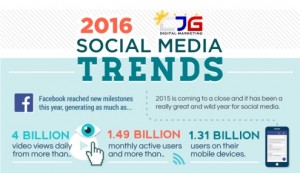I have a confession: I’m a bookmark-aholic.
 I’m one of the thousands (note: completely unscientific research) suffering from FOMO on every “tools,” “tricks” and “tips” post, which leads to me starring then filing the content into one of my 123 folders.
I’m one of the thousands (note: completely unscientific research) suffering from FOMO on every “tools,” “tricks” and “tips” post, which leads to me starring then filing the content into one of my 123 folders.
Yes, you read that right. 123 folders. Jeesh.
But here’s the good news. When it comes to compiling PR tools for posts or agency seminars, that obsessive bookmarking pays off.
In an upcoming agency seminar, we’re featuring tools all PR pros should have on their radar. And a lot of these resources came straight from – you guessed it – my crazy Chrome filing system.
There are dozens upon dozens of them. So, for the next couple of weeks, I’ll be sharing the tools I use (along with takeaway tips for you) surrounding media relations, social media and, today’s topic:
Blogging tools
1. Google AdWords Keyword Planner
Keyword Planner helps you refine your blog topics based on search traffic. You enter the key phrase you’d like to write about, and it shares traffic for that term, plus other variations that may be more popular.
A few things to keep in mind with Keyword Planner:
- Don’t choose a keyword based solely on traffic. Typically, those high-traffic keywords are tough to rank for, and your topic should matter to your audience first and foremost. Use Keyword Planner as a backstop, not your sole editorial planning tool.
- The “competition” in Keyword Planner isn’t actually competition for how you’ll rank in search engines. It’s competition for certain Google AdWords, which is entirely separate. To evaluate organic search engine competition, you need to evaluate domain authority, which is why you should start using …
2. MozBar
When I discovered MozBar, my first question was: “Where have you been all my life?” It’s a Chrome extension that lets you analyze a certain site’s domain and page authorities, on-page SEO elements, social shares and more. It analyzes your website to ensure you’ve covered all the SEO bases in terms of meta description, alt text, etc.
 Now, for evaluating search engine competition, head over to Google, turn MozBar on and type in the keyword you’d like to rank for. It will display domain authority for sites ranking for your chosen keyword. (You can find your domain authority for comparison’s sake by turning MozBar on while you’re on your site.)
Now, for evaluating search engine competition, head over to Google, turn MozBar on and type in the keyword you’d like to rank for. It will display domain authority for sites ranking for your chosen keyword. (You can find your domain authority for comparison’s sake by turning MozBar on while you’re on your site.)
If you have a domain authority of, say, 30, but those ranking for your keyword have domain authorities in the 60s (see visual, DA = domain authority), you’ll have trouble getting on the first few pages of Google. If that’s the case, think of long-tail variations of that keyword that have less traffic (but also less competition) so you have a good shot at a high rank.
3. Ubersuggest
 If you’re having trouble coming up with new, fresh blog topics, Ubersuggest will be your BFF. Enter a keyword, and Ubersuggest shares an A-Z list of all the words Google searchers have added onto the end of that phrase, which can help guide your direction for the post.
If you’re having trouble coming up with new, fresh blog topics, Ubersuggest will be your BFF. Enter a keyword, and Ubersuggest shares an A-Z list of all the words Google searchers have added onto the end of that phrase, which can help guide your direction for the post.
For example, if I type in “basketball,” Ubersuggest tells me that people searched “basketball shoes,” “basketball positions,” “basketball rules,” etc., etc.
And, if you click on the plus sign for a certain term (say “basketball hoop”), Ubersuggest lists out additional long-tail keywords people are looking for. How’s that for efficient blog-topic generation?
4. StumbleUpon
While I’m not a big StumbleUpon user myself, I do still see its value for content amplification. I have a StumbleUpon extension on Chrome, and after I’ve published a blog post, I upload it to the platform (without ever leaving my site). I do this with the Pinterest Chrome extension, too.
5. Hemingway App
This one is a godsend. For a final set of eyes before publishing, copy and paste your post into theHemingway App. It analyzes your content to tell you:
- Which sentences are hard to read,
- Which sentences are very hard to read,
- When you have too many adverbs,
- When words or phrases can be simpler, and
- When you’re using passive voice.
Since content written at an eighth-grade reading level attracts more visitors, the Hemingway App (and its suggestions) should be integral to your writing.
6. Topsy
It’s easy to interact with the readers who comment directly on your site, or tag you in their social shares, but what about those flying under the radar? Topsy compiles a list of everyone who shares your content – whether they tagged you or not.
It’s a true goldmine for building relationships with new readers. I check whenever I can to see which tweeters I need to thank for sharing my posts.
7. SlideShare
It takes hours to create quality content, so I’m all about repurposing. Every so often, I turn one of my blog posts into a SlideShare presentation (usually the list posts work best). Once uploaded, you can embed the SlideShare deck on LinkedIn, WordPress and other sites to further engage followers.
Also, SlideShare presentations appear in search results, so it’s yet another way to ensure your hard work is visible.
Here’s an example of a SlideShare presentation I created from my post, Six writing tips from “Everybody Writes”.
Is this list of blogging resource complete? Of course not. Even my crazy bookmarking can’t keep up with every industry tool. But, if you add these resources to your PR toolkit, you’ll be well on your way to a successful career in blogging.
This post originally appeared on Stephanie Vermillion’s blog, PR State of Mind.
(283)
Report Post







